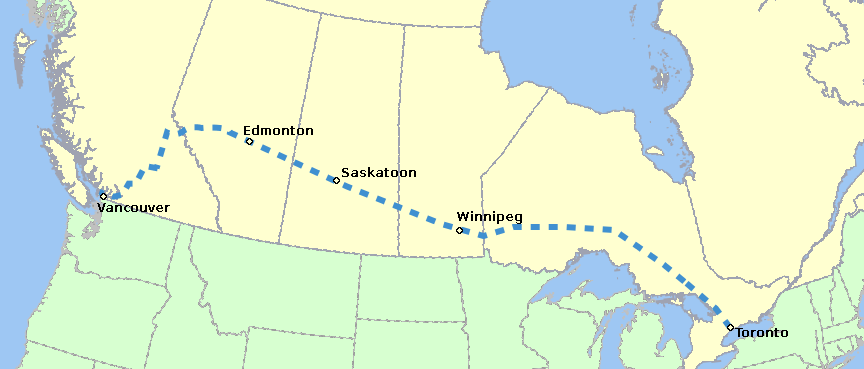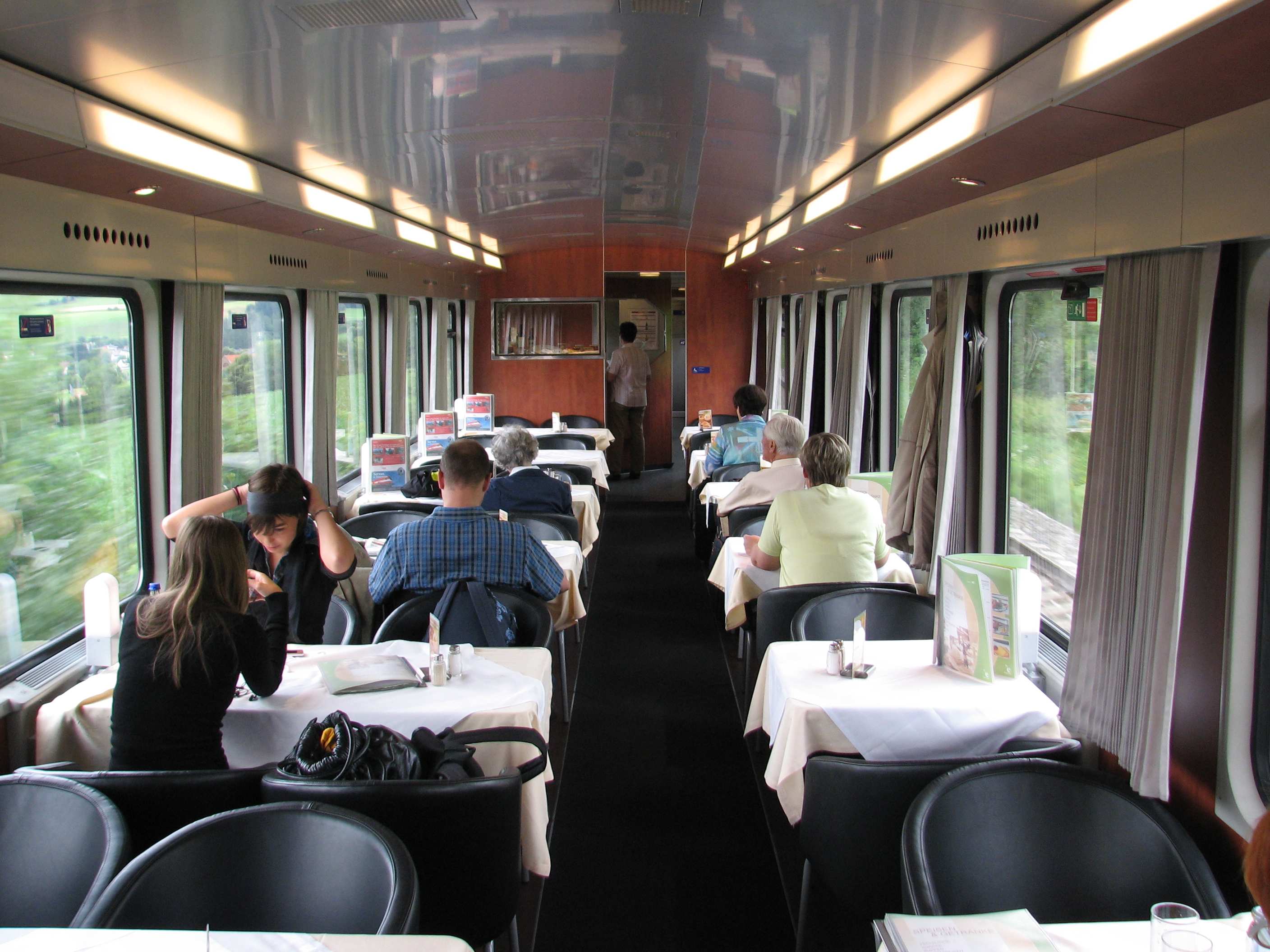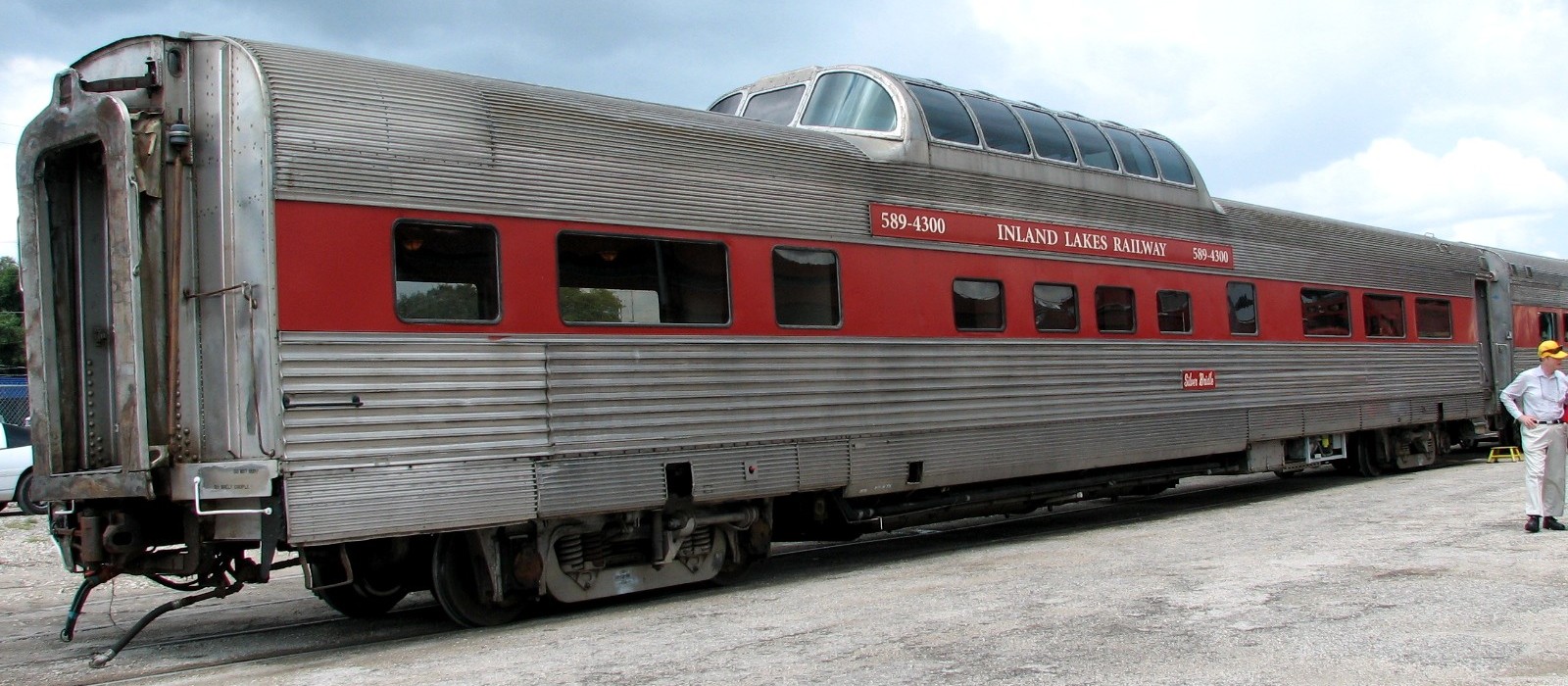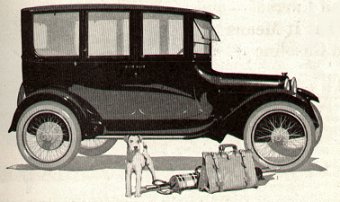|
Super Continental
The ''Super Continental'' was a transcontinental Canadian passenger train operated by the Canadian National Railway from 1955 until 1977, when Via Rail took over the train and ran it until it was cancelled in 1981. Service was restored in 1985 but was again eliminated in 1990. The original CN train had a Montreal–Ottawa–Toronto-Winnipeg–Saskatoon–Edmonton–Jasper–Vancouver routing with daily service. CN passenger service in the postwar era Following World War II, CN's passenger fleet was in need of modernization, and between 1946 and 1950 the railway purchased a total of 75 new lightweight coaches and sleeping cars. However, post-war material shortages constrained the number of cars that CN was able to procure commercially, leading to a significant programme of in-house refurbishment of older heavyweight equipment in the CN carshops. Ultimately a total of 211 heavyweight cars were fitted out with new interiors, roller bearing trucks, and sealed windows. Nevertheless, ... [...More Info...] [...Related Items...] OR: [Wikipedia] [Google] [Baidu] |
Canadian National Railway
The Canadian National Railway Company (french: Compagnie des chemins de fer nationaux du Canada) is a Canadian Class I railroad, Class I freight railway headquartered in Montreal, Quebec, which serves Canada and the Midwestern United States, Midwestern and Southern United States. CN is Canada's largest railway, in terms of both revenue and the physical size of its rail network, spanning Canada from the Atlantic coast in Nova Scotia to the Pacific coast in British Columbia across approximately of track. In the late 20th century, CN gained extensive capacity in the United States by taking over such railroads as the Illinois Central. CN is a public company with 22,600 employees, and it has a market cap of approximately CA$90 billion. CN was government-owned, having been a Crown corporations of Canada, Canadian Crown corporation from its founding in 1919 until being privatized in 1995. , Bill Gates is the largest single shareholder of CN stock, owning a 14.2% interest throu ... [...More Info...] [...Related Items...] OR: [Wikipedia] [Google] [Baidu] |
Dining Car
A dining car (American English) or a restaurant car (British English), also a diner, is a railroad passenger car that serves meals in the manner of a full-service, sit-down restaurant. It is distinct from other railroad food service cars that do not duplicate the full-service restaurant experience, such as buffet cars, cars in which one purchases food from a walk-up counter to be consumed either within the car or elsewhere in the train. Grill cars, in which customers sit on stools at a counter and purchase and consume food cooked on a grill behind the counter are generally considered to be an "intermediate" type of dining car. History United States Before dining cars in passenger trains were common in the United States, a rail passenger's option for meal service in transit was to patronize one of the roadhouses often located near the railroad's "water stops". Fare typically consisted of rancid meat, cold beans, and old coffee. Such poor conditions discouraged many from mak ... [...More Info...] [...Related Items...] OR: [Wikipedia] [Google] [Baidu] |
C-liner
The Consolidation Line was a series of diesel-electric railway locomotive designs produced by Fairbanks-Morse and its Canadian licensee, the Canadian Locomotive Company. Railfans have dubbed these locomotives “C-liners”, however F-M referred to the models collectively as the C-Line. A combined total of 165 units (123 cab-equipped lead A units and 42 cabless booster B units) were produced by F-M and the CLC between 1950 and 1955. Genesis of the C-liner Since 1932, Fairbanks-Morse had specialized in the manufacture of opposed piston diesel engines for United States Naval vessels. Not long after, the company produced a engine that saw limited use in railcar applications on the B&O, Milwaukee Road, and a few other lines. Additionally, two of the 5 × 6s were placed in an experimental center cab switcher locomotive under development by the Reading Railroad (road #87, built in 1939 by the St. Louis Car Company, or SLCC, and scrapped in 1953). A 5 x 6 powered the plant switc ... [...More Info...] [...Related Items...] OR: [Wikipedia] [Google] [Baidu] |
Canadian Locomotive Company
The Canadian Locomotive Company, commonly referred to as CLC, was a Canadian manufacturer of railway locomotives located in Kingston, Ontario. Its works were located on the south side of Ontario Street between William and Gore streets on Kingston's waterfront. Early beginnings and bankruptcies The CLC had its beginnings with a number of predecessor businesses. It began business as the ''Ontario Foundry'' in 1848, but after commencing construction of locomotives it became known as the ''Kingston Locomotive Works''. The first steam locomotive was turned out on Wednesday, December 20, 1854. This was the first of four locomotives for the Grand Trunk Railway of Canada, which was being built at that time. A further order of five locomotives for the GTR followed in October and November 1856. However, less than three dozen locomotives were built before the business went bankrupt in 1860. The ''Canadian Engine & Machinery Company'' was a shareholder-owned successor company founded in 186 ... [...More Info...] [...Related Items...] OR: [Wikipedia] [Google] [Baidu] |
MLW FPA-4
The ALCO FA was a family of B-B diesel locomotives designed to haul freight trains. The locomotives were built by a partnership of ALCO and General Electric in Schenectady, New York, between January 1946 and May 1959. Designed by General Electric's Ray Patten (along with their ALCO PA cousins), they were of a cab unit design; both cab-equipped lead (A unit) FA and cabless booster (B unit) FB models were built. A dual passenger-freight version, the FPA/FPB, was also offered. It was equipped with a steam generator for heating passenger cars. ALCO's designation of F marks these locomotives as being geared primarily for freight use, whereas the P designation of the PA sets indicates that they were geared for higher speeds and passenger use. However, beyond this their design was largely similar - aside from the PA/PB's both being larger A1A-A1A types with an even more striking nose - and many railroads used FA and PA locomotives for both freight and passenger service. Several exampl ... [...More Info...] [...Related Items...] OR: [Wikipedia] [Google] [Baidu] |
Montreal Locomotive Works
Montreal Locomotive Works (MLW) was a Canadian railway locomotive manufacturer which existed under several names from 1883 to 1985, producing both steam and diesel locomotives. For a number of years it was a subsidiary of the American Locomotive Company. MLW's headquarters and manufacturing facilities were located in Montreal, Quebec. Early history The Locomotive and Machine Company of Montreal Limited was created in 1883, producing primarily for the growing domestic market—notably the Canadian Pacific Railway, the Grand Trunk Railway, the Intercolonial Railway and, after 1922, the Canadian National Railway. Purchase by Alco In 1901, the American Locomotive Company (Alco) headquartered in Schenectady, New York, was formed by the merger of several struggling locomotive manufacturers. Alco purchased the Locomotive & Machine Company of Montreal in 1904 to tap into the Canadian market with its emerging designs. The Montreal subsidiary was renamed Montreal Locomotive Works ( ... [...More Info...] [...Related Items...] OR: [Wikipedia] [Google] [Baidu] |
Milwaukee Road
The Chicago, Milwaukee, St. Paul and Pacific Railroad (CMStP&P), often referred to as the "Milwaukee Road" , was a Class I railroad that operated in the Midwest and Northwest of the United States from 1847 until 1986. The company experienced financial difficulty through the 1970s and 1980s, including bankruptcy in 1977 (though it filed for bankruptcy twice in 1925 and 1935, respectively). In 1980, it abandoned its Pacific Extension, which included track in the states of Montana, Idaho, and Washington. The remaining system was merged into the Soo Line Railroad , a subsidiary of Canadian Pacific Railway , on January 1, 1986. Much of its historical trackage remains in use by other railroads. The company brand is commemorated by buildings like the historic Milwaukee Road Depot in Minneapolis and preserved locomotives such as Milwaukee Road 261 which operates excursion trains. History Chicago, Milwaukee, St. Paul and Minneapolis Railroad The railroad that became the Milwauke ... [...More Info...] [...Related Items...] OR: [Wikipedia] [Google] [Baidu] |
Montreal's Central Station
Montreal Central Station (french: Gare centrale de Montréal) is the major inter-city rail station and a major commuter rail hub in Montreal, Quebec, Canada. Nearly 11 million rail passengers use the station every year, making it the second-busiest train station in Canada, after Toronto Union Station. The main concourse occupies almost the entire block bounded by De la Gauchetière Street, Robert-Bourassa Boulevard, René Lévesque Boulevard and Mansfield Street in downtown Montreal. Its street address and principal vehicular access are on de La Gauchetière; pedestrian access is assured by numerous links through neighbouring buildings. The station is adorned with art deco bas-relief friezes on its interior and exterior. The station building and associated properties are owned by Cominar REIT as of January 2012. Homburg Invest Inc. (renamed Canmarc in September 2011) was the previous owner, since November 30, 2007. Prior to that, from the station's inception in 1943, it had be ... [...More Info...] [...Related Items...] OR: [Wikipedia] [Google] [Baidu] |
Dome Car
A dome car is a type of railway passenger car that has a glass dome on the top of the car where passengers can ride and see in all directions around the train. It also can include features of a coach, lounge car, dining car, sleeping car or observation. Beginning in 1945, dome cars were primarily used in the United States and Canada, though a small number were constructed in Europe for Trans Europ Express service, and similar panorama cars are in service on Alpine tourist railways like the Bernina Express. In North America, dome cars were manufactured by the Budd Company, Pullman Standard and American Car & Foundry. Southern Pacific Railroad built its own dome cars in its Sacramento, California, shops. In the 1990s Colorado Railcar began producing dome cars. Generally, seats in the dome were considered "non-revenue" like lounge car seats. Configuration A portion of the car, usually in the center of the car but offset towards one end, is split between two levels. The ... [...More Info...] [...Related Items...] OR: [Wikipedia] [Google] [Baidu] |
Budd Company
The Budd Company was a 20th-century metal fabricator, a major supplier of body components to the automobile industry, and a manufacturer of stainless steel passenger rail cars, airframes, missile and space vehicles, and various defense products. Budd was founded in 1912 in Philadelphia by Edward G. Budd, whose fame came from his development of the first all-steel automobile bodies in 1913, and his company's invention of the "shotweld" technique for joining pieces of stainless steel without damaging its anti-corrosion properties in the 1930s. Budd Company became part of Budd Thyssen in 1978, and in 1999 a part of ThyssenKrupp Budd. Body and chassis operations were sold to Martinrea International in 2006. No longer an operating company, Budd filed for bankruptcy in 2014. It currently exists to provide benefits to its retirees. Automobiles Edward G Budd developed the first all-steel automobile bodies. His first major supporters were the Dodge brothers. Following discussions ... [...More Info...] [...Related Items...] OR: [Wikipedia] [Google] [Baidu] |
The Dominion (train)
''The Dominion'' was a Canadian transcontinental passenger train operated by the Canadian Pacific Railway. It first began as a summer service between Toronto, Ontario and Vancouver, British Columbia, operating in 1931 and 1932. Effective June 23, 1933 it replaced the '' Imperial Limited'' as the CPR's main transcontinental service and included a Montreal, Quebec – Sudbury, Ontario section. It remained CPR's flagship train until the introduction of the stainless steel dome streamliner ''The Canadian'' on 24 April 1955. In 1960 the train was reconfigured as a "transcontinental local" service on the same route as the ''Canadian'' to provide services on shorter trips. ''The Dominion'' had previously carried a large amount of mail and express parcels, which afterward was carried on fast freights as well as on ''The Canadian''. This reduced ''The Dominion'' to a typical consist of four coaches and a baggage car. The service was eliminated officially on 24 April 1966, but continu ... [...More Info...] [...Related Items...] OR: [Wikipedia] [Google] [Baidu] |
The Canadian
''The'' () is a grammatical article in English, denoting persons or things that are already or about to be mentioned, under discussion, implied or otherwise presumed familiar to listeners, readers, or speakers. It is the definite article in English. ''The'' is the most frequently used word in the English language; studies and analyses of texts have found it to account for seven percent of all printed English-language words. It is derived from gendered articles in Old English which combined in Middle English and now has a single form used with nouns of any gender. The word can be used with both singular and plural nouns, and with a noun that starts with any letter. This is different from many other languages, which have different forms of the definite article for different genders or numbers. Pronunciation In most dialects, "the" is pronounced as (with the voiced dental fricative followed by a schwa) when followed by a consonant sound, and as (homophone of the archaic p ... [...More Info...] [...Related Items...] OR: [Wikipedia] [Google] [Baidu] |




.jpg)

.jpg)



.png)